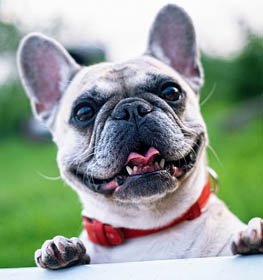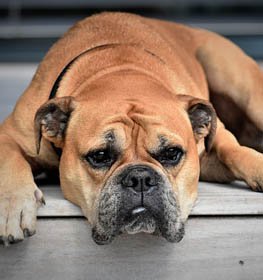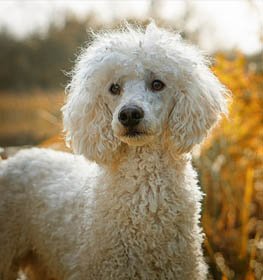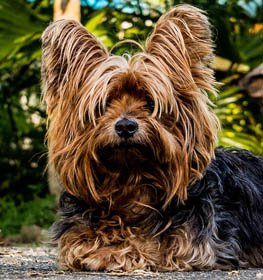Alaskan Klee Kai Information & Dog Breed Facts
Collection of all the general dog breed info about Alaskan Klee Kai so you can get to know the breed more.
| Group | Companion Dogs |
|---|---|
| Popularity Rank | 210 |
| Reviews | 1 |
| User Ratings | |
|
Compare the Alaskan Klee Kai With Other Dogs
Select at least one dog breed to make the comparsion. | |
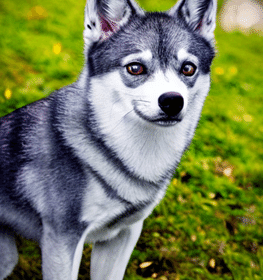 | |
| Origin | |
|
Common Names & Aliases
What other names is an Alaskan Klee Kai known by? Discover all traditional, regional and informal names used for this breed. | Klee KaiMini HuskyMiniature Alaskan Husky |
|---|---|
|
Breed Classification
What type of dog breed is an Alaskan Klee Kai? Learn about its genetic classification and breeding category. | Purebred |
|
Size Classification
What size category is an Alaskan Klee Kai? Learn how big the Alaskan Klee Kai breed typically grows. | Medium |
|---|---|
|
Weight Statistics
How much does an Alaskan Klee Kai weigh? Discover typical weight ranges for adult males and females of the Alaskan Klee Kai breed. | 10-23 pounds (4.3-10 kg) |
|
Average Weight
What is the average weight of an Alaskan Klee Kai? | 16.5 pounds (4.6.5 kg) |
|
Height
How tall is the Alaskan Klee Kai? Alaskan Klee Kai height: | 13-17.5 inches (33-42 cm) |
|
Average Height
What is the average height of an Alaskan Klee Kai? | 13-17.5 inches (37.5 cm) |
|
Price Range
How much does an Alaskan Klee Kai puppy cost? Find current market prices and factors affecting Alaskan Klee Kai costs. | $1000-$1500 If you choose to purchase the Alaskan Klee Kai, you should know that the mentioned amount of money is an average of the collected data from breeders’ sites and puppy finder places. If you have a Alaskan Klee Kai for sale, please advertise it on a reliable website to make sure the Alaskan Klee Kai gets to a happy place. |
|---|---|
|
Availability
How easy is it to get a Alaskan Klee Kai? How many Alaskan Klee Kai are there in the world? | Average: The Alaskan Klee Kai is a commonly available dog breed. There is less risk of overbreeding compared to the very popular dogs. Of course, they may be more popular in some countries, and inbreeding may occur, so be careful. |
|
Intelligence Rating
How intelligent is an Alaskan Klee Kai? Discover the Alaskan Klee Kai's intelligence ranking and learning capabilities. | Average: It takes patience to teach this breed any tricks or commands, but the effort is worth it. They understand and remember new commands after an average of 25-40 repetitions.
The Alaskan Klee Kai ranks average in the intelligence ranking of dogs. |
|---|---|
|
Training Difficulty
How easy is it to train an Alaskan Klee Kai? Learn about the Alaskan Klee Kai's trainability and response to training methods. | Alaskan Klee Kai dogs are easy to train. They find out the association between commands and actions quite quickly. |
|
Watchdog Rating
How good is an Alaskan Klee Kai as a watchdog? Learn about the Alaskan Klee Kai's alertness and guarding instincts. | Alaskan Klee Kai dogs are one of the best watchdogs. Their main job is to observe and they're very consistent in their effort. The best vocal cords and sense of hearing belong to them. Usually, they're very territorial and protective about their property, so the Alaskan Klee Kai dogs will alert you if they sense something different. |
|
Territorial Protection
Is an Alaskan Klee Kai protective of its territory? Learn about the Alaskan Klee Kai's guarding instincts and behavior. | Alaskan Klee Kai dogs are average defenders. Some dogs are very protective of their territory, while others easily let a stranger to trespass. This breed is not sure to defend its territory in every situation. |
|
Personality Traits
What personality does an Alaskan Klee Kai have? Learn about characteristic Alaskan Klee Kai temperament and behavior traits. | ActiveCuriousAgileIntelligentLoyalTerritorialQuick |
|---|---|
|
Sensitivity Level
How sensitive are they? Alaskan Klee Kai sensitivity: | They are a little bit more sensitive than other dog breeds. Soft punishment affects them emotionally. Alaskan Klee Kai dogs don't tolerate irregular daily routines, noisy households, and frequent guest visits really well.
They are receptive to their owner's emotions and make wonderful family companions. |
|
Affection Level
How affectionate are they? Is an Alaskan Klee Kai a good family dog? | High: Alaskan Klee Kai dogs are genuinely loyal, soft and gentle, loving, and affectionate dogs toward their handlers. They enjoy quality time with their owners despite the activity and are considered great therapy dogs for those in need. This breed responds strongly to their handler's emotions because they bond closely. Their happiness is your happiness. |
|
Social Needs
How much social interaction does the Klee Kai need? Alaskan Klee Kai social needs: | Alaskan Klee Kai dogs need a lot of social interaction. They desire to always be with someone or around people. This breed hates being left alone. |
|
Impulse to Wander or Roam
How likely is the Alaskan Klee Kai to run away? Does this breed explore or wander a lot? Does Alaskan Klee Kai roam? | The wanderlust potential of the Alaskan Klee Kai is strong enough to escape from home. They have a strong desire for exploring the world. Safer to walk them on a leash unless you teach them how to get back to you on command. |
|
Prey Drive
Do this canine have a strong prey drive? Does Alaskan Klee Kai have high prey drive? | Alaskan Klee Kai dogs have a high impulse to chase and catch something. Cats or any other small animals are in danger. It's a natural instinct, doesn't necessarily mean that Alaskan Klee Kai dogs are aggressive. Better to keep this breed on a leash. |
|
Barking Frequency
Does an Alaskan Klee Kai bark a lot? Learn about typical Alaskan Klee Kai vocalization patterns and triggers. | Low to Average: The Alaskan Klee Kai rarely barks. This breed could be a good choice if you're looking for a quiet breed. They don't bark unless there is a good reason.
Top reasons for barking: protection, alarm, fear, boredom, attention-seeking, greeting, separation anxiety, compulsive barking. |
|---|---|
|
Playful Nature
How playful is an Alaskan Klee Kai? Understand the typical play drive and energy level of the Alaskan Klee Kai breed. | The Alaskan Klee Kai is a highly playful breed. Excited barking and sometimes nipping will alert you to play. |
|
Apartment Adaptability
Can an Alaskan Klee Kai live in an apartment? Learn about the Alaskan Klee Kai's suitability for apartment living. | It is not the best choice if you want to keep them indoors, however, with careful exercise and several walks a day, they will tolerate the indoor environment, so it is possible to keep Alaskan Klee Kai indoors. |
|
Lifestyle Adaptability
How adaptable is an Alaskan Klee Kai to lifestyle changes? Learn about the Alaskan Klee Kai's flexibility to new situations. | Alaskan Klee Kai dogs adapt well to lifestyle changes and different living environments. They don't mind moving from one place to another with their owner. |
|---|---|
|
Alone Time Tolerance
Can an Alaskan Klee Kai be left alone? Learn about the Alaskan Klee Kai's tolerance to solitude. | Alaskan Klee Kai dogs tend to have separation anxiety when their owners left them alone at home because they bond very closely with them. |
|
Bite Risk Assessment
What is an Alaskan Klee Kai biting potential? Learn about the Alaskan Klee Kai's bite risk factors. | Low 🔽 The Alaskan Klee Kai has a low chance of biting somebody. Top reasons for dog bite: protection, pain, excitement, herding instinct, being provoked. (Data based on the available online bite statistics.) |
|---|---|
|
Mouthing Tendency
Is an Alaskan Klee Kai mouthy? Learn about the Alaskan Klee Kai's tendency to use mouth during play. | Alaskan Klee Kai dogs have a lower than average tendency to nip, chew, playbite, or herd people. It's a common habit during puppyhood, not aggressive behavior. These "bites" don't hurt, but Alaskan Klee Kai dogs need to be taught a good attitude. |
|
Bite Strength Rating
How strong is an Alaskan Klee Kai bite? Learn about the Alaskan Klee Kai's bite force measured in PSI. | Between 200 and 400 PSI ⏺ Alaskan Klee Kai bite force: Ordinary. Bite force Alaskan Klee Kai measurements typically fall within the range of 200 to 400 PSI. The bite force of an Alaskan Klee Kai is considered ordinary when compared to other dog breeds, but it is still quite powerful. This Alaskan Klee Kai bite force PSI can cause bite wounds. Alaskan Klee Kai bite PSI is not something that should be feared if the dog is well-trained and managed. To avoid any issues, it's essential to learn how to train an Alaskan Klee Kai puppy not to bite from an early age.
The Alaskan Klee Kai, and many others, have a fearsome presence because they have significant jaw strength, so it is important not to anger the dog and have it around strangers until it is fully trained. However, they are usually quite calm and good companions, they work well in families and are easy to care for. In conclusion, while the Alaskan Klee Kai bite force is certainly an interesting aspect of the breed, it is important not to let it overshadow the many other reasons why these dogs are so loved and respected. With proper training and socialization, an Alaskan Klee Kai can be a loyal and protective companion for your family. |
|
Average Lifespan
How long does an Alaskan Klee Kai live? Learn about the typical lifespan of the Alaskan Klee Kai breed. | 11-15 years The average lifespan of Alaskan Klee Kai: 13 years |
|---|---|
|
Climate Tolerance
How well does an Alaskan Klee Kai handle different weather? Learn about the Alaskan Klee Kai's climate adaptability. | Prefers cold weather The Alaskan Klee Kai can adapt well to harsh weather conditions, and also can be a good mountain dog. Dogs can suffer from frostbite and hypothermia in extremely cold weather, so it is important to take precautions to keep your dog safe and comfortable during the winter months. |
|
Health Concerns
What health issues are common in an Alaskan Klee Kai? Discover typical conditions affecting the Alaskan Klee Kai breed. | Alaskan Klee Kais tend to have more frequent health issues than other breeds. Regular vet check-ups are needed.
|
|
Vet Care Frequency
How often does an Alaskan Klee Kai need vet visits? Learn about the Alaskan Klee Kai's veterinary care requirements. | Frequent The Alaskan Klee Kai should have a complete physical check-up at least once (but preferably twice) per year. If your dog shows any symptoms, call your veterinarian. |
|
Health Problems
What genetic/health problems does the Alaskan Klee Kai breed have? What are the health issues and concerns of the Alaskan Klee Kai breed? Most common health risks of Alaskan Klee Kai: | HypothyroidismAutoimmune HypothyroidismFactor Vii DeficiencyVaccination Sensitivity |
|
Energy Rating
How energetic is an Alaskan Klee Kai? Understand daily activity needs of the Alaskan Klee Kai breed. | Alaskan Klee Kai dogs have a higher energy level than other dog breeds. If you want a dog for snuggling on the couch, this breed isn't the perfect choice for you. |
|---|---|
|
Activity Requirement / Exercise Need
How much exercise does an Alaskan Klee Kai need? How much exercise do Alaskan Klee Kai dogs require per day?
Do Alaskan Klee Kai dogs need a lot of exercises? | Alaskan Klee Kai dogs have an average exercise need. This breed is satisfied with short walks every weekday and a long ones on weekends. |
|
Sleeping Need
How much sleep does the Alaskan Klee Kai breed need? | Alaskan Klee Kai dogs are quite energetic dogs and they don't spend too much time with sleeping. If you live an active life, this breed can be a good choice for you. |
|
Obesity Tendency
Is an Alaskan Klee Kai prone to weight gain? Learn about the Alaskan Klee Kai's obesity risks. | Low to Average: The Alaskan Klee Kai has a low to the average risk for obesity. To make your dog happy and fit, feed him with quality dry dog food and live an active life together. Try to find the happy medium between exercise and feeding.
If you notice any weight gain, consult your veterinarian and make a diet plan. Reduce unhealthy food and snacks, and measure the Alaskan Klee Kai weight regularly. |
|---|---|
|
Food Consumption
How much food does an Alaskan Klee Kai need daily? Learn about the Alaskan Klee Kai's feeding requirements. | Recommended daily amount: 3/4 to 1 1/2 cups of high-quality dry food a day, divided into two meals.Alaskan Klee Kais are high energy dogs that need a diet that will fuel them throughout the day. |
|
Allergy Friendliness
Is an Alaskan Klee Kai hypoallergenic? Learn about the Alaskan Klee Kai's suitability for allergy sufferers. | No Alaskan Klee Kai dogs don't do well with allergy sufferers by causing allergic reactions. Some dog breeds are even considered to higher possibility of an allergic response. Coat type isn't necessarily relevant, because most people are allergic to dander (flakes on the dog's skin) or saliva, not actually to dog hair. |
|---|---|
|
Coat Colors
What colors does an Alaskan Klee Kai come in? Discover all possible Alaskan Klee Kai color variations. | BlackGray Red White |
|
Grooming Requirements
How much grooming does an Alaskan Klee Kai need? Learn about Alaskan Klee Kai coat maintenance requirements. | Easy to groom: The Alaskan Klee Kai doesn't require a lot of grooming. Seasonal flea treatment is needed, but cutting the dog's hair by a professional groomer isn't necessary. Ears and eyes should be cleaned regularly to avoid infections. Alaskan Klee Kai is a good choice if you don't have the time, skill, or money to take care of a high-maintenance dog. Recommended for beginners. |
|
Drooling Tendency
Does an Alaskan Klee Kai drool a lot? Learn about the Alaskan Klee Kai's drooling habits. | The Alaskan Klee Kai is a perfect example of a low drooling tendency. If you dislike being covered by slobber spots on your clothes, the Alaskan Klee Kai could be a good choice for you. Drooling is the unintentional saliva flowing outside of the mouth. It can be completely normal or a sign of a health problem. Certain dog breeds drool less than others, just like the Alaskan Klee Kai.
If you notice any change in your dog's drooling habit, you should contact a vet as soon as possible. |
|
Stinkiness Rating
Does an Alaskan Klee Kai smell bad? Learn about the Alaskan Klee Kai's natural odor levels. | Medium ⏺ The Alaskan Klee Kai has an average chance of bad smell. Top reasons for dog stinkiness: infection of bad tooth/ear/skin folds, gas attacks. |
|
Coat Characteristics
What type of coat does an Alaskan Klee Kai have? Learn about the Alaskan Klee Kai's fur characteristics. | Thick |
|
Bathing Needs
How often does an Alaskan Klee Kai need baths? Learn about the Alaskan Klee Kai's bathing requirements. | 6-8 weeks Rarely. Bathing your dog is beneficial to them in more ways than just one. It’s also a good time to look for unusual scratches, bumps, fleas, and other irregularities. When their hair is wet and flat against their body, these details are more visible.
For example, short-haired dog breeds can go a very long time in between baths. These short-haired breeds shed regularly and that shedding works to naturally remove excess dirt and oil. So unless your weenie dog got into the garbage can, you can probably hold off on a bath for a while. |
|
Shedding Level
How much do Alaskan Klee Kai dogs shed? How to control, reduce and prevent the shedding of the Klee Kai? Do Alaskan Klee Kai dogs shed a lot? | Alaskan Klee Kai dogs shed none to minimal. Having a puppy from this breed you don't have to be afraid of your couch or car being covered by dog hair. Alaskan Klee Kai dogs could be the best choice if you don't tolerate dog hair. |
|
Child Compatibility
Is an Alaskan Klee Kai good with children? Learn about the Alaskan Klee Kai's behavior around kids of different ages. | Alaskan Klee Kai dogs are kid-friendly dogs. This breed is a good choice if you have children. |
|---|---|
|
Pet Compatibility
How well does an Alaskan Klee Kai get along with other pets? Discover the Alaskan Klee Kai's compatibility with other animals. | Alaskan Klee Kai dogs are generally with other pets. |
|
Stranger Friendly
Are they aggressive or friendly towards/with strangers? Alaskan Klee Kai temperament with other people: | Alaskan Klee Kai dogs are average friendly towards strangers. |
|
Cat Friendly
How well do Alaskan Klee Kai dogs get along with cats? Are they good with kittens? What is this fido's temperament with cats? Can they be good with cats? Can the Alaskan Klee Kai breed live with a cat? | Alaskan Klee Kai dogs are average friendly towards cats. |
|
Dog Friendly
Is Alaskan Klee Kai good with other dogs? Are they dog-friendly dogs? How well do Alaskan Klee Kai dogs get along with other dogs? | Alaskan Klee Kai dogs are average friendly towards other dogs. |
|
Good For First Time Owners
Is Alaskan Klee Kai breed good for first-time owners? Do they make a good dog for novice owners? Is Alaskan Klee Kai breed suitable for first-time owners? | Yes Alaskan Klee Kai dogs are good for novice owners, due to their easy-going personality. |
|
Office Friendly
Are Alaskan Klee Kai dogs good office canines? Do Alaskan Klee Kai dogs make good office-friendly pets? Can they be office dogs? | No Alaskan Klee Kai is not the best dog breed for office environment. |
|
Senior Citizens Friendly
Are they senior citizens friendly dogs? How well do Alaskan Klee Kai dogs get along with the elderly people? What is the Klee Kai temperament with senior people? Are Alaskan Klee Kai dogs good for elderly owners? | Alaskan Klee Kais are usually recommended for elderly people. |
|
Service Dog Capability
Can an Alaskan Klee Kai be a service dog? Learn about the Alaskan Klee Kai's service work potential. | Not really This breed generally not used as a service dog. A service dog is a term used in the USA to refer to any type of assistance dog specifically trained to help people who have disabilities, such as visual impairment, hearing impairments, mental disorders, seizures, mobility impairment, and diabetes. Service dogs are protected under the ADA (Americans with Disabilities Act).
Alaskan Klee Kai is not the best breed for service purposes. |
|---|---|
|
Therapy Work Suitability
Is an Alaskan Klee Kai good as a therapy dog? Learn about the Alaskan Klee Kai's therapy work aptitude. | Not really This breed is generally not used as a therapy dog. A therapy dog is a dog that might be trained to provide affection, comfort, and love to people in hospitals, retirement homes, nursing homes, schools, hospices, disaster areas, and people with anxiety disorders or autism.
Alaskan Klee Kai is not the best breed for therapeutic purposes. |
|
Scent Detection Ability
Is an Alaskan Klee Kai good at detection work? Learn about the Alaskan Klee Kai's scenting abilities. | Not really They are not typically employed for this type of work, but there may be exceptional cases. A detection dog or sniffer dog is a dog that is trained to use its senses (mostly its smell) to detect substances such as explosives, illegal drugs, wildlife scat, currency, blood, and contraband electronics such as illicit mobile phones.
Alaskan Klee Kai is not the best breed for detection purposes. |
|
Search & Rescue Potential
Can an Alaskan Klee Kai do search and rescue? Learn about the Alaskan Klee Kai's SAR capabilities. | Not really This dog breed is not typically used as a search and rescue dog. The use of dogs in search and rescue (SAR) is a valuable component in wilderness tracking, natural disasters, mass casualty events, and locating missing people.
The Alaskan Klee Kai is not the best breed for SAR purposes. |
|
Maritime Work Ability
Is an Alaskan Klee Kai good on boats? Learn about the Alaskan Klee Kai's maritime capabilities. | Not really Alaskan Klee Kai breed usually doesn't like being on a boat. Boat dogs were typically bred for their strength, stamina, and water resistance, as they were often required to perform tasks such as pulling in fishing nets, and jumping into the water to retrieve ropes or lines, or helping to move cargo. Sailor dog is a type of dog that was bred to accompany sailors on their voyages. They were typically used for three purposes: as a working dog, a watchdog, and as a companion. A boat dog is a term used to describe a type of dog that was traditionally bred and used as a working dog on boats. |
|
Draft Work Capability
Can an Alaskan Klee Kai pull carts? Learn about the Alaskan Klee Kai's drafting abilities. | Not really A drafting dog or draft dog is a dog bred and used for cart pulling. Dogs bred for this work have strong builds and qualities that are needed, strength and determination.
Alaskan Klee Kai is not the best breed for drafting purposes. |
|
Military Service Background
Was an Alaskan Klee Kai used in military service? Learn about the Alaskan Klee Kai's military history. | Not really In history, this breed was not really used for combat dog. |
|
Puppy Litter Size
How many puppies does an Alaskan Klee Kai usually have? Learn about typical litter sizes. | 1-3 puppies |
|---|---|
|
Pregnancy Duration
How long is an Alaskan Klee Kai pregnant? Learn about the Alaskan Klee Kai's gestation period. | 60-64 days Reproductive cycle of the female Alaskan Klee Kai: The first period called Proestrus lasts for about 9 days.
During this time the females start to attract males. You can notice by swelling vulva and bloody discharge. The second part is the Estrus when the female is receptive for the male. It lasts for about 3 to 11 days. The sign of the proestrus part is the soft and enlarged vulva. The discharge decreases and lightens in color. The third part is the Diestrus. Normally, it occurs around day 14. In this period the female’s discharge changes for vivid red and coming to its end. The vulva returns to average, and she will no longer permit mating. The fourth part called the Anestrus. The time frame between heat periods normally lasts about six months. |
|
Breeding Frequency
How often can an Alaskan Klee Kai have puppies? Learn about safe breeding intervals. | Once a year. More frequent breeding is not healthy. It is very important not to buy a dog from a puppy mill, where the needs of the pups and their mothers are ignored. It's an inhumane high-volume dog breeding facility, where puppies born several times a year. |
|
AKC Classification
What AKC group is an Alaskan Klee Kai in? Learn about the Alaskan Klee Kai's AKC classification. | Not recognized by the American Kennel Club. |
|---|---|
|
FCI Classification
What FCI group is an Alaskan Klee Kai in? Learn about the Alaskan Klee Kai's international classification. | Not recognized by FCI. |
|
Kennel Club Recognition
Which kennel clubs recognize an Alaskan Klee Kai? Learn about the Alaskan Klee Kai's official recognition. | American Canine RegistryDog Registry of America Inc.Continental Kennel ClubNational Kennel ClubUnited Kennel ClubAmerican Rare Breed Association |
Alaskan Klee Kai Pros and Cons
- Training Difficulty: Alaskan Klee Kai dogs are easy to train.
- Grooming Requirements: Easy to groom: The Alaskan Klee Kai doesn't require a lot of grooming.
- Shedding Level: Alaskan Klee Kai dogs shed none to minimal.
- Drooling Tendency: The Alaskan Klee Kai is a perfect example of a low drooling tendency.
- Obesity Tendency: Low to Average: The Alaskan Klee Kai has a low to the average risk for obesity.
- Watchdog Rating: Alaskan Klee Kai dogs are one of the best watchdogs.
- Mouthing Tendency: Alaskan Klee Kai dogs have a lower than average tendency to nip, chew, playbite, or herd people.
- Lifestyle Adaptability: Alaskan Klee Kai dogs adapt well to lifestyle changes and different living environments.
- Child Compatibility: Alaskan Klee Kai dogs are kid-friendly dogs.
- Senior Citizens Friendly: Alaskan Klee Kais are usually recommended for elderly people.
- Good For First Time Owners: Alaskan Klee Kai dogs are good for novice owners, due to their easy-going personality.
- Health Concerns: Alaskan Klee Kais tend to have more frequent health issues than other breeds.
- Allergy Friendliness: Alaskan Klee Kai dogs don't do well with allergy sufferers by causing allergic reactions.
- Impulse to Wander or Roam: The wanderlust potential of the Alaskan Klee Kai is strong enough to escape from home.
- Alone Time Tolerance: Alaskan Klee Kai dogs tend to have separation anxiety when their owners left them alone at home because they bond very closely with them.
- Office Friendly: Alaskan Klee Kai is not the best dog breed for office environment.
Alaskan Klee Kai History
The Alaskan Klee Kai or AKK for short is originated from Wasilla, Alaska. Also, the breed’s name was created from parts of Alaskan Athabaskan words, which translates to ‘little dog’ in English. The Alaskan Klee Kai has ancient roots deep in several native breeds which populated Alaska for thousands of years. Many of these dogs developed naturally surrounded by the harsh environment and climate in Alaska. Many nomadic tribes saw the possibility of survival in these dogs, thus they started to use them to pull sleds, to hike, hunt and track, or to alert the tribe in the case when enemies or predators were approaching their territory. Later, as these wild dogs got more domesticated, they were imported to Alaska in the early 1900s. These dogs are considered to be the DNA bases for all the Husky lines and their offspring.
The first litter of Alaskan Klee Kai was born in Oklahoma, in the 1970s, by a fortunate accident as the result of an unplanned cross between an unknown father and a Siberian Husky">Siberian Husky mother. These puppies looked exactly like Huskies, but their size was much smaller than the original Husky. A woman named Linda S. Spurlin was visiting some relatives in Oklahoma when she first heard about the unusual litter of puppies. She immediately fell in love with the small Husky-type of puppies, thus she decided to bring the puppies home, in Alaska.
Due to the fact that the first litter’s mating father was unknown, Linda Spurlin had to customize a unique breeding method in order to re-create the small-sized Husky-type of puppies. She wanted to avoid dwarfism, which is common when breeders try to create smaller-sized dogs, by breeding the genetically smallest specimens of the same breed together. Instead of this practice, she set her mind to outcross the Alaskan and the Siberian Huskies with breeds like the Alaskan Eskimo Dog or the Schipperke, with the intention of reducing the size of the puppies, while keeping their Husky-like traits. Another advantage to this breeding process was that Linda managed to minimize the health problems, and also to develop a more even-tempered companion-sized breed while maintaining the adorable Husky-like appearance.
Ten years after revealing the Alaskan Klee Kai to the public, Linda Spurlin retired from dg breeding, but other breeders continued breeding the AKK, due to the public interest it raised. Despite the growing public interest in the breed, the breed remained rare. Moreover, being a relatively new breed, which some even consider a hybrid breed, the AKK is not widely recognized by the major kennel clubs as a purebred breed. The American Rare Breed Association recognized the AKK in 1995, and the UKC (United Kennel Club) had followed them in 1997. However, this was still not enough for an AKC (American Kennel Club) registration. The Alaskan Klee Kai was mainly bred to be a family companion rather than to follow its ancestors in working, thus the breed is mostly kept as a house pet.
Latest Alaskan Klee Kai Compares
Alaskan Klee Kai Names
How old is my Alaskan Klee Kai in human years?
You May Also Like
Rate The Alaskan Klee Kai Breed
Alaskan Klee Kai Comments, Reviews and Questions
- Marissa Andrews
May 26, 2020, 2:24:34 PM:
I have a klee kai, and I love him!! He's adorable as a puppy, sheds minimally, and is easy to train.

